Steel fist of israel
The Israeli military example had a significant impact on the development of strategy and tactics of armored forces: Israeli tank generals Israel Tal and Moshe Peled are represented in the Great Tank Generals Hall at General Patton Tank Force Center, along with German Field Marshal Erwin Rommel and US General George Patton .
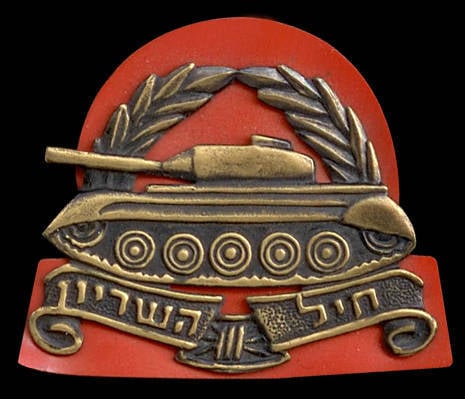
Israel Armored Forces Emblem (Heil Hashirion)
Creation of tank forces
Israeli tank forces, the main strike force of the IDF ground forces, were born in the battles of the War of Independence. In February, 1948 was created by the Panzer Service under the command of Yitzhak Sadeh, but the tanks themselves were not yet - the main tank manufacturers - the United States, the United Kingdom and France - banned the sale of weapons to the Jewish state.
Already during the battles of the War of Independence, 10 tanks of Hochkiss H-39, which, together with the Sherman M4 tank and Cromwell two tanks that had been stolen from the British and the first tank unit, the 82 tank battalion, were acquired. The battalion commander was the former Major of the Polish Army Felix Beatus, who passed from Stalingrad to Berlin. The crews of the battalion were tankers - Jewish volunteers from around the world who fought against the Nazis in the ranks of the British army and the Polish Army.
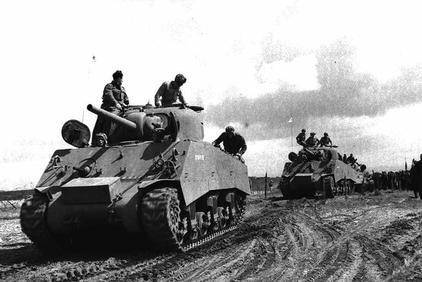
Israeli tank Sherman M4. War for independence. 1948
Among them were several former officers of the Red Army tankmen. They were called "suicide bombers" - they deserted from the Soviet occupation forces in Germany and got to Eretz Israel by various means. In the USSR, they were sentenced in absentia to death for "treason". They went through deadly dangers to fight for the Jewish state.
Already by the middle of 1948, the 7 and 8 I tank brigades were formed, which took part in battles with the Arab aggressors.
Israeli tanker general Moshe Peled. Portrait from the Great Tank Commanders Gallery in
US Patton General Tank Center
In those years, the doctrine of a tank war, adopted by the IDF, began to take shape. It is based on the following principles:
The first is the "Totality of the Tank" This means that tank units, due to mobility, armor and firepower, are able to independently solve the main tasks of a land war.
The second is “Bronekulak” as the main tank maneuver ”, which consists in introducing into the breakthrough large tank forces capable of conducting an offensive at high speed, destroying the forces of the enemy on its way.
The main combat unit of the Israeli armored forces is a tank brigade. During the fighting, tank divisions and corps are formed from tank brigades.
Israeli general tanker Israel Tal. Portrait from the Great Tank Commanders Gallery in
US Patton General Tank Center
Analysis of tank battles showed a high percentage of casualties among tank commanders. This is due to the requirements of a code of commanding honor, adopted in the Israeli army:
“Follow me!” - the main team in the IDF, the commander is obliged by personal example to lead subordinates.
Tanks go into battle with open hatches - the commander, standing in the turret of the tank with the hatch folded, controls the actions of the crew. This significantly expands the review and allows you to fight with "open eyes", but the commander becomes the primary target for enemy fire.
The formation of tank forces
The first test of this doctrine in combat took place during Operation Kadesh 1956 of the year. For three days, 7-I and 27-I tank brigades, interacting with infantry and parachute units, broke through the enemy defenses and, after passing the Sinai desert, went to the Suez Canal. During the fighting, up to 600 units of enemy armored vehicles were destroyed or captured, Israeli losses amounted to 30 tanks and armored personnel carriers.
Israeli tanks AMX-13. Operation Kadesh.1956g.
The IDF tank park began to be replenished with modern combat equipment. During the battles, the AMX-13 tanks purchased in France proved to be well-known - the first modern tanks that entered service with the IDF. All in all, the IDF then received about 200 such tanks.
At the beginning of the 60s, hundreds of Super-Sherman M-50 and M-51 tanks entered the IDF.
Israeli tanks Super Sherman
At the beginning of 1960, the United States finally agreed to sell the M48 tanks, which received the name Magi in Israel. However, the Americans tried to hide the deal from their Arab friends. Therefore, the deal was concluded between Germany and the United States, and Israel just bought these tanks from Germany. In total, within the framework of this transaction, more than 200 tanks М48 were received by the IDF.
Israeli tanks Magah M48.
Approximately at the same time several hundred British Centurion tanks, which received the name Shot in Israel (translated from Hebrew as “whip”), entered into service with armored forces.
Israeli tank Shot Centurion.
With this renewed tank fleet, Israel was to conduct fierce tank battles in
Six Day War 1967. and War Yom Kippur 1973.
In 1964, General Israel Tal became commander in chief of the tank forces. This experienced tanker, based on combat experience, developed completely new tactical techniques for conducting tank war. Among them - sniper fire of tank turrets for long and long distances - up to 5-6 kilometers and even 10-11 kilometers. This immediately gave a noticeable advantage in battle.
The battle was tested in the Battle for Water in 1964-1966. Then Syria attempted to divert the water of the Jordan River, and thereby deprive Israel of its water resources. The Syrians began to build a branch canal, which Israel could not allow.
It was decided to destroy the earthmoving equipment, tanks and artillery batteries of the enemy, covering the construction with fire of tank guns.
To this end, the Israeli command staffed the Sherman and Centurion tanks with trained crews, with General Tal taking the gunner’s seat in one of the tanks, Colonel Shlomo Lahat, commander of the 7 tank tank, taking the charge.
As bait the Israelis sent a tractor to the neutral lane. The Syrians immediately bought into a ruse and opened fire. Goals were immediately spotted. Israeli tanker sniper fire destroyed all selected targets at a distance of 6 kilometers, and then the tank fire was moved to targets that were at a distance of 11 kilometers.
Such tank fire strikes were carried out repeatedly throughout the year. The Syrians suffered heavy losses and were forced to completely abandon their plans to divert water.
Six Day War. 1967 year
The six-day 1967 war of the year was a true triumph for the Israeli armored forces. For the first time, Israeli tank formations acted simultaneously on three fronts. They were opposed by the many times superior forces of the five Arab states, but even this did not save the Arabs from total defeat.
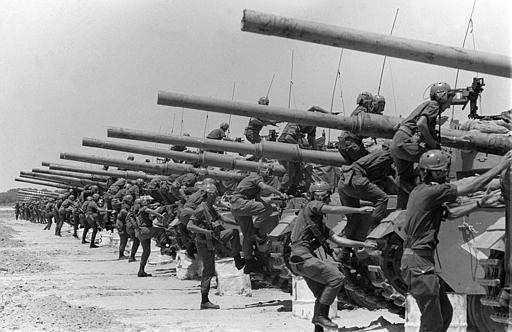
Six Day War 1967. Israeli tank crews
On the southern front, a strike was inflicted by the forces of three tank divisions of Generals Tal, Sharon and Ioffe. In an offensive operation called the March Through the Sinai, Israeli tank units interacting with aviation, motorized infantry and paratroopers, made a lightning fast breakthrough of the enemy’s defense and moved through the desert, destroying the surrounded groupings of Arabs. On the northern front, along the impassable mountain trails, the 36th Panzer Division of General Peled attacked, which, after three days of fierce fighting, reached the outskirts of Damascus. On the eastern front, Israeli forces knocked out Jordanian units from Jerusalem and liberated ancient Jewish shrines from foreign invaders.
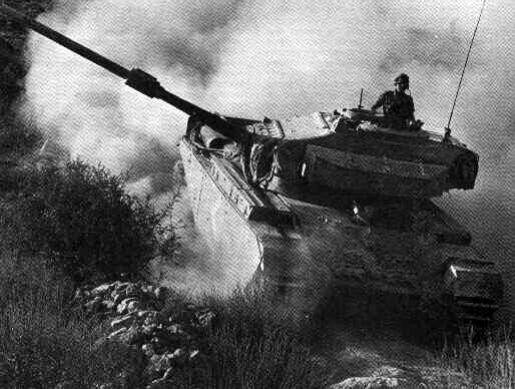
During the fighting, more than 1200 enemy tanks were destroyed, thousands of armored vehicles were captured, mostly Russian-made. The captured Russian T-54 / 55 tanks underwent a major overhaul at Israeli tank factories and entered into service with the tank forces called "Tyrant-4 / 5".
Trophy Russian armored vehicles captured in the Six-Day War, at the parade in Jerusalem.
9 September 1969 of the 6 armored squadron of captured Russian T-55 tanks and three armored personnel carriers BTR-50 captured in the Six-Day War was secretly transported on landing ships to the Egyptian coast of the Suez Canal. The main goal was the destruction of the Russian air defense system, hindering the actions of Israeli aviation. In the course of this brilliantly conceived and executed operation, called Raviv, Israeli tankers walked through the enemy’s rear during 9 hours, ruthlessly destroying the radar, the positions of the missile forces and artillery, headquarters, warehouses and army bases. Successfully completing the raid without a loss, the Israeli armored group returned safely to the landing craft on the amphibious assault ships.
War Yom Kippur. 1973
The hardest test for Israel was the Doomsday War, which began on October 6, 1973, on the day of one of the most important Jewish holidays, when most of the soldiers were on leave. Israel was suddenly attacked on all fronts by the repeatedly superior forces of the aggressors, including the armies of Egypt, Syria, Iraq, Morocco, Jordan, Libya, Algeria, Lebanon, Sudan, thousands of Russian "military advisers", Cuban and North Korean "volunteers." On the expanses from Sinai to the Golan Heights, one of the largest tank battles in the world military stories - from both sides up to six thousand tanks took part in it.
The situation was especially dangerous in the Golan Heights - there were only 200 tanks 7 and 188 tank brigades confronting 40 tanks of Syrians for a length of 1400 kilometers. Israeli tank crews stood to death, demonstrating massive heroism.
The names of the heroes of the tank, who stopped the enemy, entered the history of Israel. Among them, the platoon commander, Lieutenant Zvi Gringold, the company commander, Captain Meir Zamir, nicknamed "Tiger", the battalion commander, lieutenant colonel Kahalani.
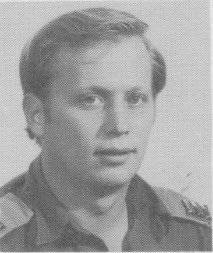 Lieutenant (already captain in the photo) Zvi Gringold - tankman, who performed an unprecedented feat: during the battle, which lasted about a day, he destroyed Russian tanks to 60
Lieutenant (already captain in the photo) Zvi Gringold - tankman, who performed an unprecedented feat: during the battle, which lasted about a day, he destroyed Russian tanks to 60Tankers fought until the last round, of the tank crews who had survived the battle, who had just left the burning tanks, immediately formed new crews, which again went into battle on the repaired combat vehicles. Lieutenant Gringold went to battle three times in new cars. Being contused and wounded, he did not leave the battlefield and destroyed Russian tanks to 60. The Israeli tank crews survived and won, the 210-I tank division commanded in time under the command of General Dana Lanera completed the defeat of the enemy.
Israeli tanks Centurion. War Yom Kippur 1973. Sinai desert
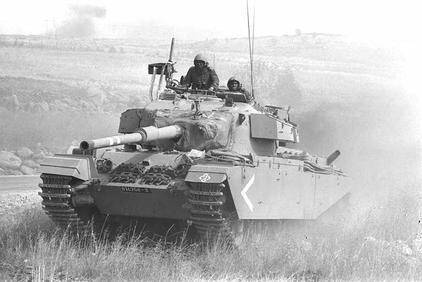
Israeli tank Centurion. War Yom Kipur 1973. Golan Heights
During the fighting, the Iraqi tank corps was also destroyed, thrown to the aid of the Syrians. Israeli troops launched a counter-offensive and October 14 were already in the suburbs of Damascus.
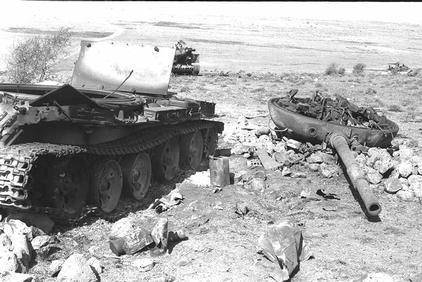
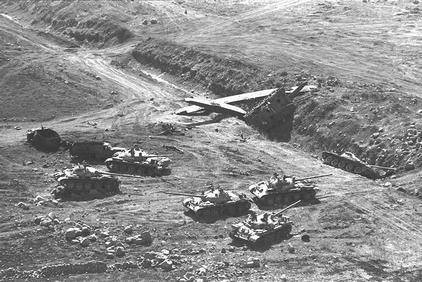
Destroyed and captured Russian armored vehicles - T-62 tanks. October 1973g. Golan Heights
Not less fierce tank battle took place in the sands of Sinai, where the Arabs initially managed to press off parts of the General Mendler's 252 Panzer Division. General Mendler died in battle, but stopped further advancement of the enemy. On October 7, the 162 Tank Division under the command of General Bren and the 143 Tank Division under the command of General Ariel Sharon entered the battle. During the heavy tank battles, the main forces of the Arabs were destroyed.
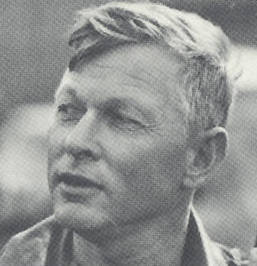 Commander 162-th Panzer Division, General Abraham Adan (Bren)
Commander 162-th Panzer Division, General Abraham Adan (Bren)October 14 was the largest encounter battle of tank formations since the Second World War, “tanks against tanks”, in which enemy 260 tanks were destroyed. Israeli tank crews lost their combat vehicles to 20.
16 October, Israeli tank forces launched a counter-offensive. The tankers of General Sharon broke through the front, installed a pontoon ferry across the Suez Canal, and Israeli tanks poured onto the African coast. In the ensuing battles, the Egyptian army was surrounded, all its reserves were destroyed, and a direct road to attack on Cairo was opened.
Video of the 14 Tank Brigade that fought during the Yom Kippur War at Sinai
War Yom Kippur. October 1973
During the fierce tank battles of the Doomsday War, Israeli tank forces again proved their superiority: more than 2500 enemy tanks (T-62, T-55, T-54) and thousands of other armored vehicles were destroyed in the battles. However, the victory had to be paid a high price - over a thousand heroic battling Israeli tankers were killed in the battles.
Tank Merkava
One of the outcomes of the past wars was the creation of its own tank, in which the requirements of the Israeli tank crews to the combat vehicle were most fully implemented and their combat experience was taken into account. Another reason that pushed for the creation of an Israeli tank was the embargo on the supply of military equipment, introduced by foreign manufacturers every time the war began. This situation was intolerable, because the Arabs always had a continuous stream of Russian weapons.
At the head of the Israeli tank project was General Israel Tal, a combat tank officer who went through all the wars. Under his leadership, in just a few years, the project of the first Israeli tank, the Merkava-1, was created, which already in 1976 was launched into serial production at Israeli tank factories. Such a pace of creation of the tank industry has not yet known the history of world tank design.
The commander of the parachute brigade, Colonel Rafael Eitan, and the commander of a tank division, General Israel Tal. 1967 Six Day War
New Talu General Tal gave the name "Merkava", which in Hebrew means "war chariot." This word came from the TANAKH; it is mentioned in the first chapter of the Book of Ezekiel as a symbol of movement, power and a stable foundation.
The tank of the first generation Merkava Mk1
The tank of the second generation Merkava Mk2
Tank of the third generation Merkava Mk3
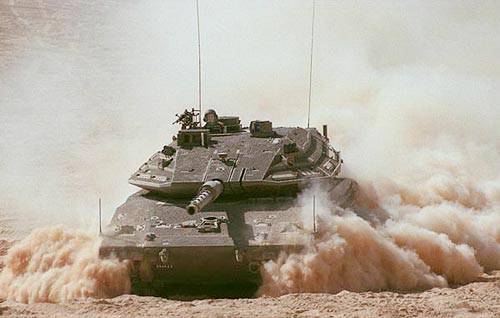
The tank of the fourth generation Merkava Mk4
The first tank "Merkava" was equipped with a tank battalion, commanded by the son of General Tal. Tank "Merkava" is recognized as the best tank in the world for the Middle East theater of operations. Israeli designers were the first in the world to develop dynamic armor, the use of which greatly reduced the likelihood of a tank being hit by shells and guided missiles. Blocks of dynamic protection “Blazer” were installed on the Merkava tanks, and on most of the “Centurions”, М48 and М60, which remained in service with the IDF
Now the fourth generation of the Merkava tanks is being produced, and the Israeli tank industry has become one of the largest in the world — tens of thousands of engineers and workers work in more than 200 enterprises.
The war in Lebanon. 1982
“Shlom HaGalil” (Peace of Galilee) - this is how the IDF General Staff called the Israeli invasion of Lebanon, which began on 6 on June 1982. in response to attacks by Palestinian terrorists operating from Lebanese territory.
On the Lebanese border, Israel concentrated 11 divisions, united in three army corps. Each corps was assigned its own area of responsibility or direction: Lieutenant-General Yekutiel Adam commanded the Western direction, Lieutenant General Uri Simhoni commanded the Central direction, and Lieutenant General Janusz Ben-Gal headed the Oriental direction. In addition, two divisions were deployed in the Golan Heights, in the immediate vicinity of Damascus, under the command of Lieutenant General Moshe Bar-Kochba. The armored divisions were 1200 tanks. The overall command of the operation was assigned to the Chief of the General Staff, Colonel-General R. Eitan, and the Commander of the Northern Military District, Lieutenant-General A. Drori.
Tank divisions attacked the coastal direction and already 10 June entered the suburbs of the capital of Lebanon, Beirut. Later, Beirut was completely captured by Israeli troops. During the offensive, the largest amphibious assault operation was carried out, when tank and motorized infantry units were landed in the rear of the enemy from the landing ships of the Israeli Navy.
Particularly fierce fighting took place on the eastern direction, where the offensive was aimed at the strategically important Beirut-Damascus highway. Under the terms of the cease-fire agreement, Israeli tanks were stopped approximately 30 kilometers from the Syrian capital Damascus.
Israeli tanks and infantry are engaged in street fighting in Beirut. 1982
Operation in Lebanon. 2006
During the operation in Lebanon in July-August 2006. The IDF was working on completely new methods of warfare against terrorist groups.
Hezbollah’s terrorist organization created a deep-echelon system of fortified areas in southern Lebanon, which included many disguised underground bunkers connected by dozens of kilometers of tunnels. Weapons and the equipment accumulated by the militants, according to their plans, should have been enough for many months of defense, during which they hoped to inflict heavy losses on the Israeli army.
Particular attention was paid by the terrorists to the anti-tank war - they carried out continuous mining in tank-dangerous areas, including the laying of dozens of land mines with hundreds of kilograms of TNT in each. The terrorists were armed with the most modern Russian anti-tank weapons: the Malyutka, Fagot, Konkurs, Metis-M, Kornet-E anti-tank systems, as well as RPG-7 and RPG-29 "Vampire" grenade launchers.
Despite such an impressive training of militants, the IDF successfully solved all the tasks with minimal losses and completely eliminated the terrorist presence in the border areas.
According to Israeli data, the militants carried out hundreds of launches of anti-tank missiles during the fighting, but their effectiveness was rather low: there were only 22 cases of armor penetration, and the damaged tanks returned to service after repairs in the fighting in Lebanon. Irrecoverable losses amounted to all 5 tanks, two of them were blown up by land mines. During the battles, Israeli tankmen killed 30.
Israeli Armored Forces
All military experts point out the high survivability of Israeli tanks, especially the most advanced Merkava 4 tank.
The experience of fighting in Lebanon showed that despite the minimal losses of armored vehicles during the fighting, solving the problem of survivability of the main battle tank and its crew on the battlefield saturated with anti-tank weapons is the use of high-tech means of active protection, ensuring the change of trajectory or damage of all types of flying cumulative ammunition.
In Israel, the development of active protection of armored vehicles is carried out by the military-industrial concern RAFAEL; among the many projects, the active protection complexes Iron Fist and Trophy should be noted. Israel is leading in this direction - the Trophy's active defense system was the first in the world to be installed on mass-produced Merkava Mc4 tanks.
The Israeli tank troops have gone a glorious military way and are rightfully considered to be one of the strongest in the world - according to open data, it is known that the IDF is now up to 5000 tanks. This is more than, for example, in countries such as the United Kingdom, France and Germany. But the main strength of the Israeli tank forces lies in people whose invaluable combat experience and courage are the guarantor of Israel’s security.
- Alexander Schulman
- http://shaon.livejournal.com/84780.html?thread=1993260"rel =" nofollow ">http://shaon.livejournal.com/84780.html?thread=1993260
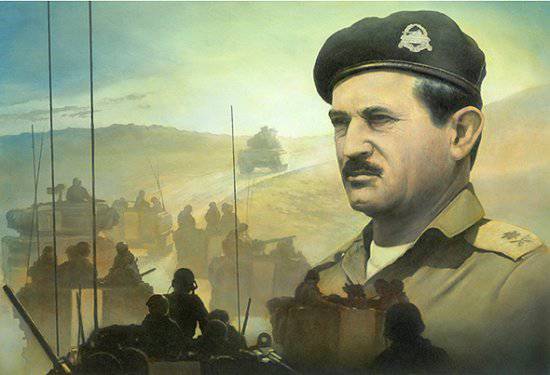
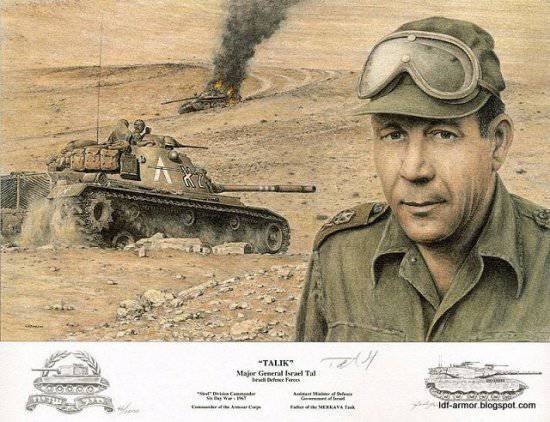
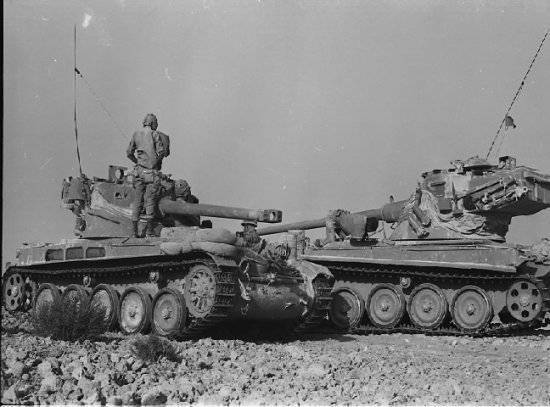
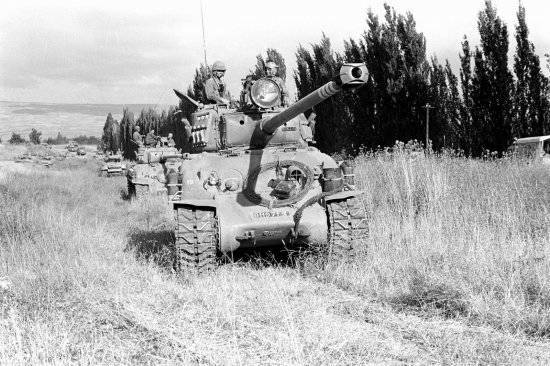
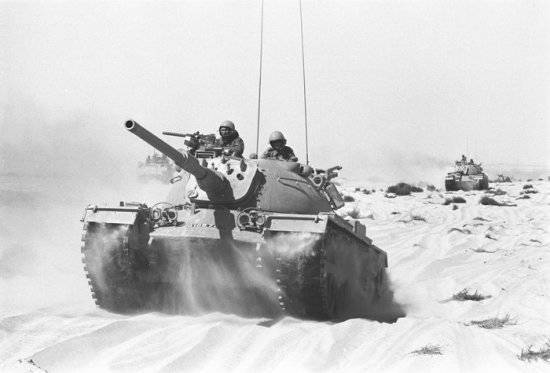
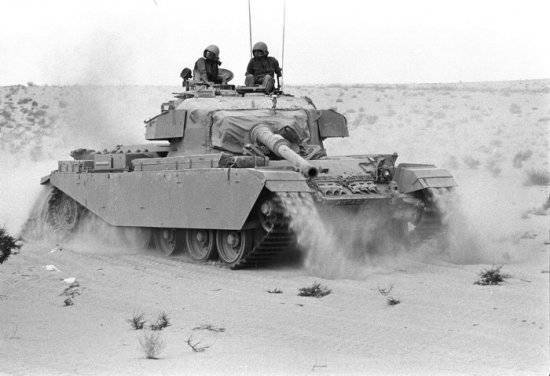
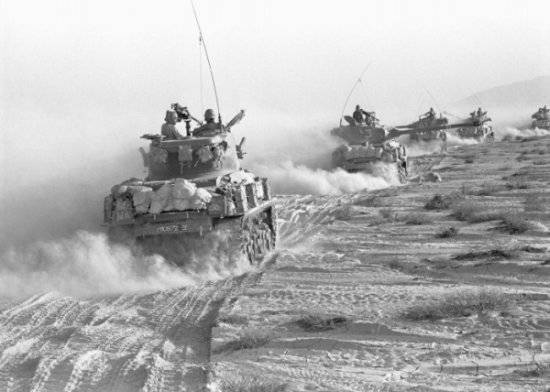
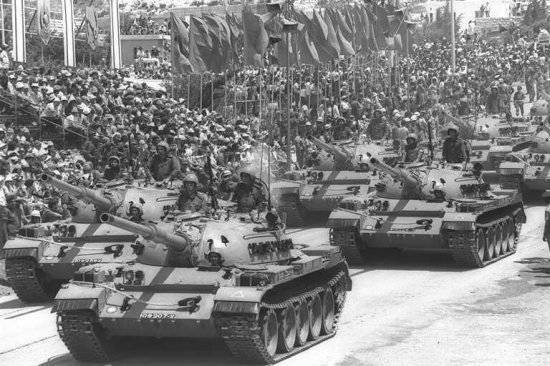
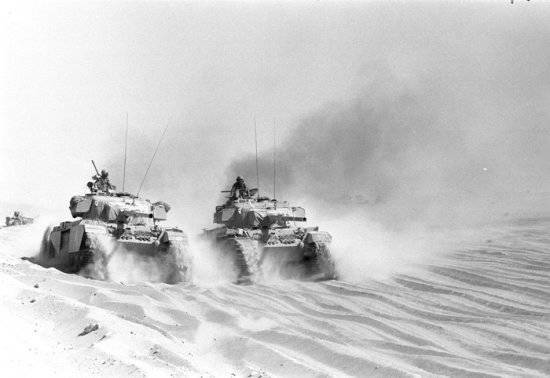
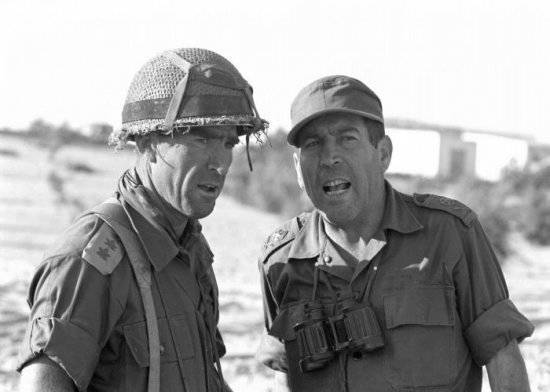
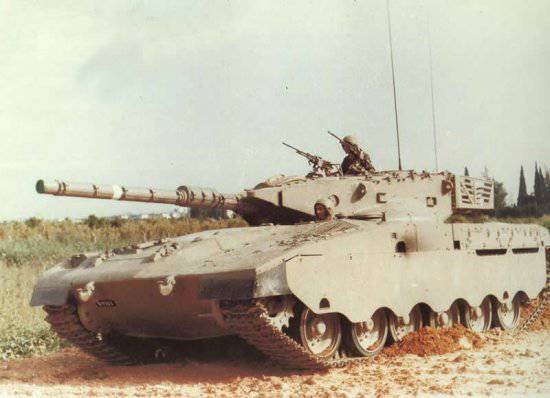
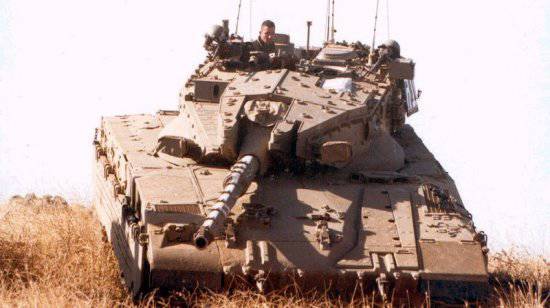
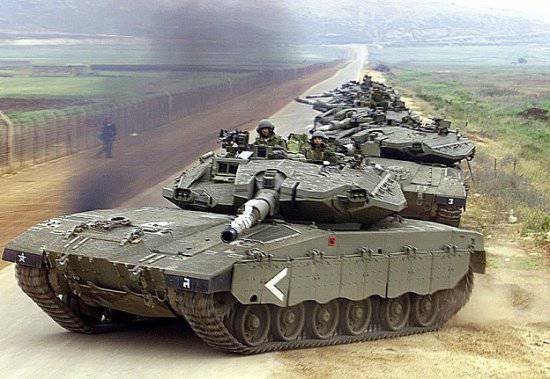
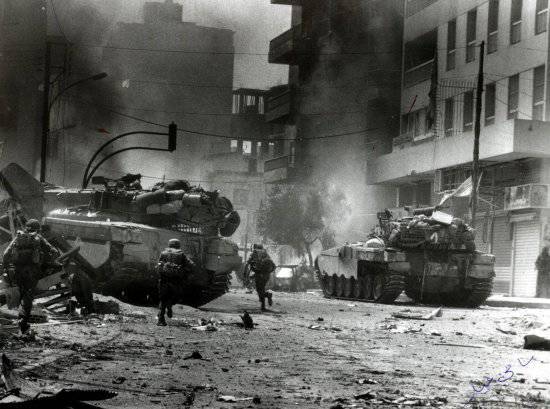
Information